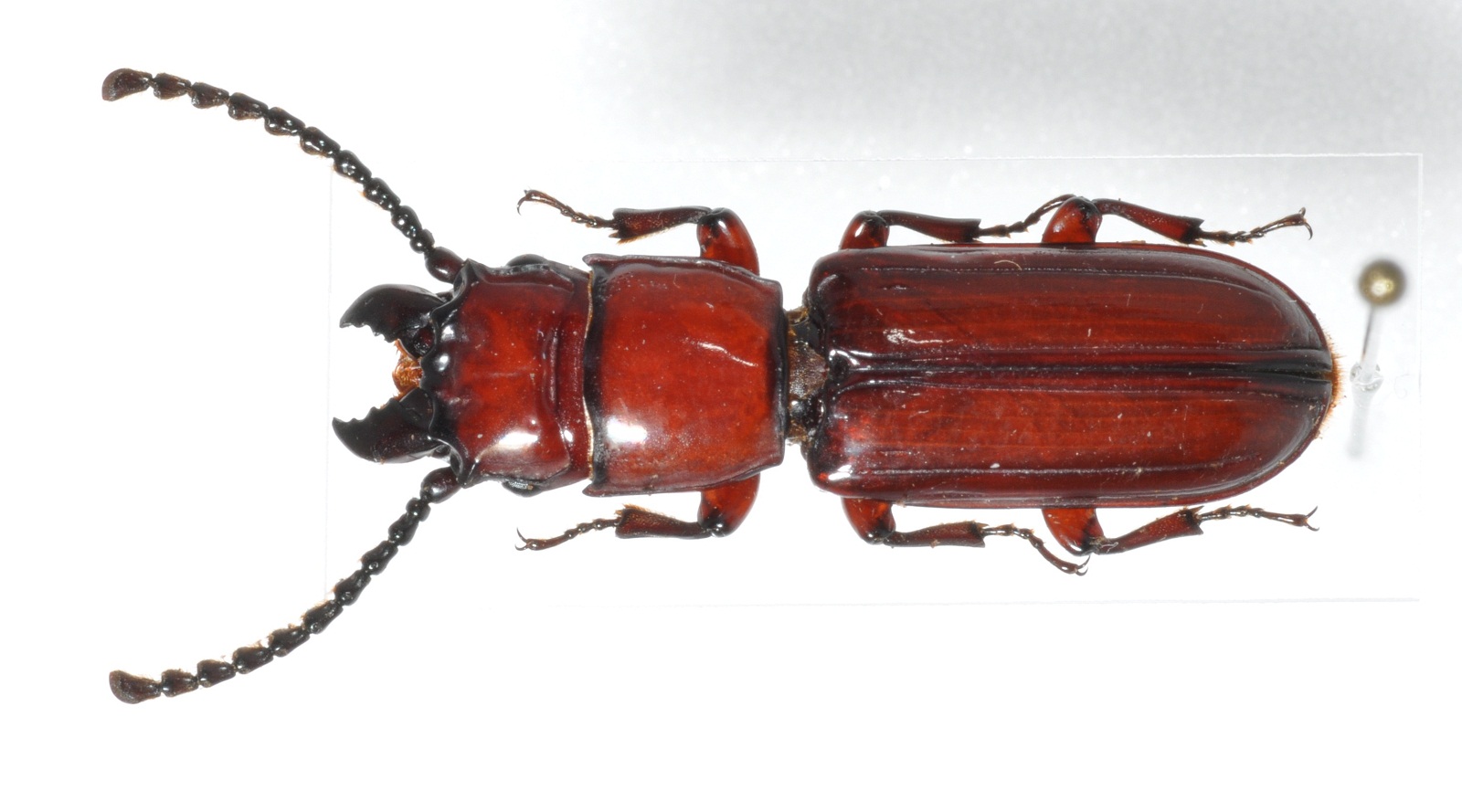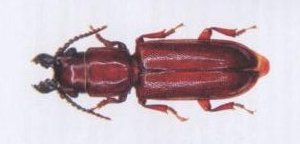| T O P I C R E V I E W |
| Pierre |
Posted - 31/03/2012 : 22:05:29

A large species (21 mm) from Cameroon.
Parandrinae? |
| 7 L A T E S T R E P L I E S (Newest First) |
| Littlebeetle23 |
Posted - 19/02/2014 : 12:24:31
Il s'agit de Passandra sexstriata Dalman, 1817, appartenant bien sûr à la famille des Passandridae. |
| Pierre |
Posted - 01/04/2012 : 21:32:28
La structure des antennes, l'insertion des antennes cachée par-dessus, la configuration des hanches et des Mesepimères, tout ça renvoie clairement aux Cucujidae. - Je ne connaissais pas les théories qui lient l'émergence des Cerambycidae à cette famille... reste que la similitude de ces bêtes est stupéfiante. Est-ce que le mode de vie peut jouer un rôle? Ils partagent un milieu identique. |
| Carlo |
Posted - 01/04/2012 : 20:47:38
Allora niente convergenza ma base del cespuglio evolutivo.... molto interessante! |
| Francesco |
Posted - 01/04/2012 : 14:59:12
Indeed... and on this basis old entomologists believed that Cerambycidae had derived from Cucujdae... while some other ones keep considering Parandrini at the basis of the tree of Cerambycidae...  |
| Carlo |
Posted - 01/04/2012 : 11:14:53

Il semble un bon exemple d'évolution convergent: Parandra morettoi Adlbauer, 2004. |
| Pierre |
Posted - 31/03/2012 : 23:11:05
I had had many doubts about this specimen and am not surprised with your answer. But I found interesting to show such kind of similar habitus, which easily leads towards confusion between beetles families.
Thank you, Francesco. |
| Francesco |
Posted - 31/03/2012 : 22:34:46
Unfortunately, it is not a cerambycid.
I think it belongs to the Passandridae or to some other cucuiod family. |


